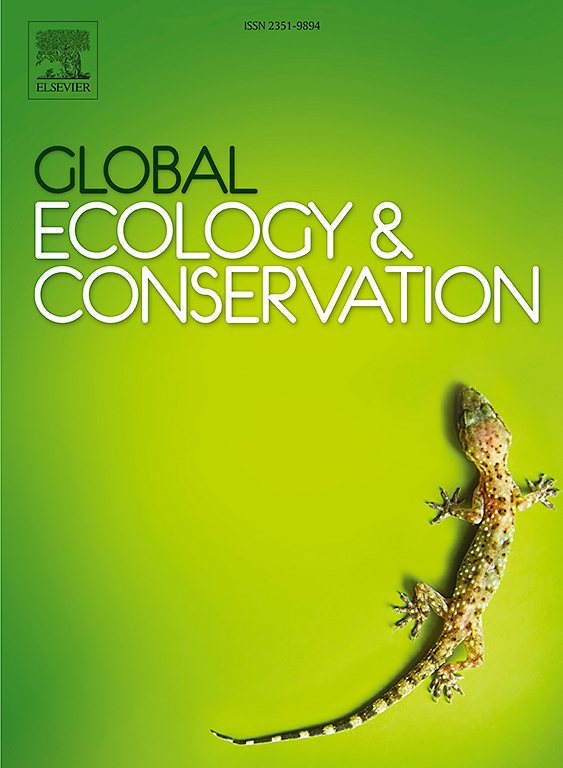Ecological influences on regeneration dynamics in the sundarbans, Bangladesh: Exploring biotic and abiotic factors across time and space
IF 3.5
2区 环境科学与生态学
Q1 BIODIVERSITY CONSERVATION
引用次数: 0
Abstract
Natural regeneration is critical for sustaining mangrove ecosystems, particularly the Sundarbans, the world's largest mangrove forest. This study assessed the impacts of biotic and abiotic factors on regeneration dynamics, examining spatial variations across salinity zones and temporal changes (2010–2020) using data from 30 permanent sample plots (PSPs) established by the Mangrove Silviculture Division, Bangladesh Forest Research Institute. We found that the biodiversity of the Sundarbans remained relatively stable over time, with a high Müeller-Dombois Similarity Index and low Bray-Curtis Dissimilarity Index across years and zones. However, salinity variations influenced species composition. The study also revealed a decline in the dominance of Heritiera fomes and an increase in the abundance of Excoecaria agallocha (showed habitat expansion) over time while both species maintained a high importance value. The total biomass growth from living (77.84 Mg/ha) and newly established trees (14.39 Mg/ha) was low, while the biomass loss (81.79 Mg/ha) from the dead trees was significant. Furthermore, our analysis indicated that abiotic factors, including salinity, siltation, and soil pH, had minimal influence on plant functional traits, but changes in basal area notably affected biomass dynamics. These findings provide insights into the regeneration trends of the Sundarbans and guide the formulation of policies to manage this unique ecosystem sustainably.
求助全文
约1分钟内获得全文
求助全文
来源期刊

Global Ecology and Conservation
Agricultural and Biological Sciences-Ecology, Evolution, Behavior and Systematics
CiteScore
8.10
自引率
5.00%
发文量
346
审稿时长
83 days
期刊介绍:
Global Ecology and Conservation is a peer-reviewed, open-access journal covering all sub-disciplines of ecological and conservation science: from theory to practice, from molecules to ecosystems, from regional to global. The fields covered include: organismal, population, community, and ecosystem ecology; physiological, evolutionary, and behavioral ecology; and conservation science.
 求助内容:
求助内容: 应助结果提醒方式:
应助结果提醒方式:


